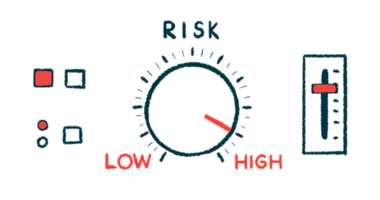Incidence of myasthenia gravis increasing in Czech Republic
Total number of cases estimated to be 27.19 per 100,000 people in 2020

The incidence of myasthenia gravis (MG) is increasing in the Czech Republic, with about 40% of the patients being in their economically productive age, between 15 and 65.
That’s according to data from a Czech patient registry that also found about a third of these patients couldn’t work at full capacity. This effect was even more pronounced among those with refractory, or treatment-resistant, MG.
“It is crucial to gain insight into, not only the health implications, but also the intricate financial impact that this condition imposes on patients, their families, and society as a whole,” the researchers wrote. The study, “Burden of Myasthenia Gravis in the Czech Republic: Analysis of the Nationwide Patient Registry,” was published in Neurology and Therapy.
MG is an autoimmune disease caused by autoantibodies that target proteins at the neuromuscular junction, the site where nerve and muscle cells communicate to coordinate voluntary movements. In most patients, such antibodies, target acetylcholine receptors (AChRs) in muscle cells.
Cases of myasthenia gravis in Czech Republic
Here, researchers analyzed recent data from MyReg, an MG patient registry initiated in 2015, to assess patient demographics, disease characteristics, and the types of treatments used to manage MG.
As of November 2021, the database included 1,421 patients from 15 centers. The patients were classified as having early-onset MG (before age 50) or late-onset disease (age 50 or older).
The 425 participants in the early-onset group were mostly women (71.8%) with a mean age at MG onset of 30.6, while the 990 patients with late-onset disease were mainly men (64.4%) with a mean age of 66.9. Patients had been living with the disease for a mean of about 7.5 years before enrolling in the registry.
MG incidence, or the number of new MG cases, tended to increase over time, from 0.62 cases per 100,000 people in 2015, to 3.13 cases per 100,000 people in 2017. The overall MG prevalence, or the total number of cases in the country, was estimated to be 27.19 cases per 100,000 people in 2020, corresponding to about 2,900 people with MG.
Most patients had generalized MG (76.8%), a more severe disease type that causes widespread muscle weakness in different parts of the body, while 23.2% had ocular MG, a type of MG that mainly affects the muscles that control eye and eyelid movements.
The generalized form was more frequent in those with early-onset disease than in those with late-onset MG (83.3% vs. 74.1%). The ocular form was more common in late-onset patients (25.9% vs. 16.7%).
Most patients were positive for anti-AChR antibodies (84.1%), particularly those with late-onset disease (89.3%) and with generalized MG (87.7%).
MG disease severity
Patients had a mean score of 5 in the MG Composite (MGC) score, a measure of disease severity, corresponding to a mild form of MG. Early-onset patients had an MGC score higher than that of those with late-onset disease at the time of diagnosis (5.5 vs. 4.9).
According to the MG Foundation of America (MGFA) classification, most patients had mild generalized MG that mainly involved respiratory and throat muscles (MGFA IIb; 37.5%). Patients with late-onset MG were more commonly placed in class IIb, while those with early-onset MG were more frequently placed in class IIa, which denotes a mild form of generalized MG that mainly affects the muscles in the limbs, head, and trunk.
The percent predicted forced vital capacity (FVC) — a lung function measure that assesses the total amount of air a person can forcibly exhale after a deep breath — at the time of enrollment was 73.8%, meaning it was mildly decreased. This value was lower (58.9%) during a myasthenic crisis, a serious MG complication where difficulty breathing may require invasive or noninvasive ventilation.
The most common medical treatment prescribed to patients was pyridostigmine, which is sold as Mestinon and is also available as generics (85.1%), followed by the corticosteroid prednisone (64%), and the immunosuppressant azathioprine (49.1%).
A thymectomy, a surgery to remove the thymus, an organ of the immune system that is thought to contribute to the production of self-reactive antibodies in MG, was performed in 26% of the patients.
Overall, 70 patients had refractory MG, most commonly women (58.6%) and with generalized MG (96.9%). These patients were much younger at the time of disease onset (43.4 vs. 56.7 years), had higher disease severity (MGC: 8 vs. 4.9), and lower FVC levels (70.1% vs. 74%) than those with non-refractory MG. They were also most likely to retire early (56.8% vs. 38%) and to receive full disability pensions (44% vs. 29.4%).
“Our analysis shows that the incidence of MG is increasing in the Czech Republic and that patients with refractory disease … have a higher burden of disease than non-refractory patients,” the researchers wrote.








Leave a comment
Fill in the required fields to post. Your email address will not be published.